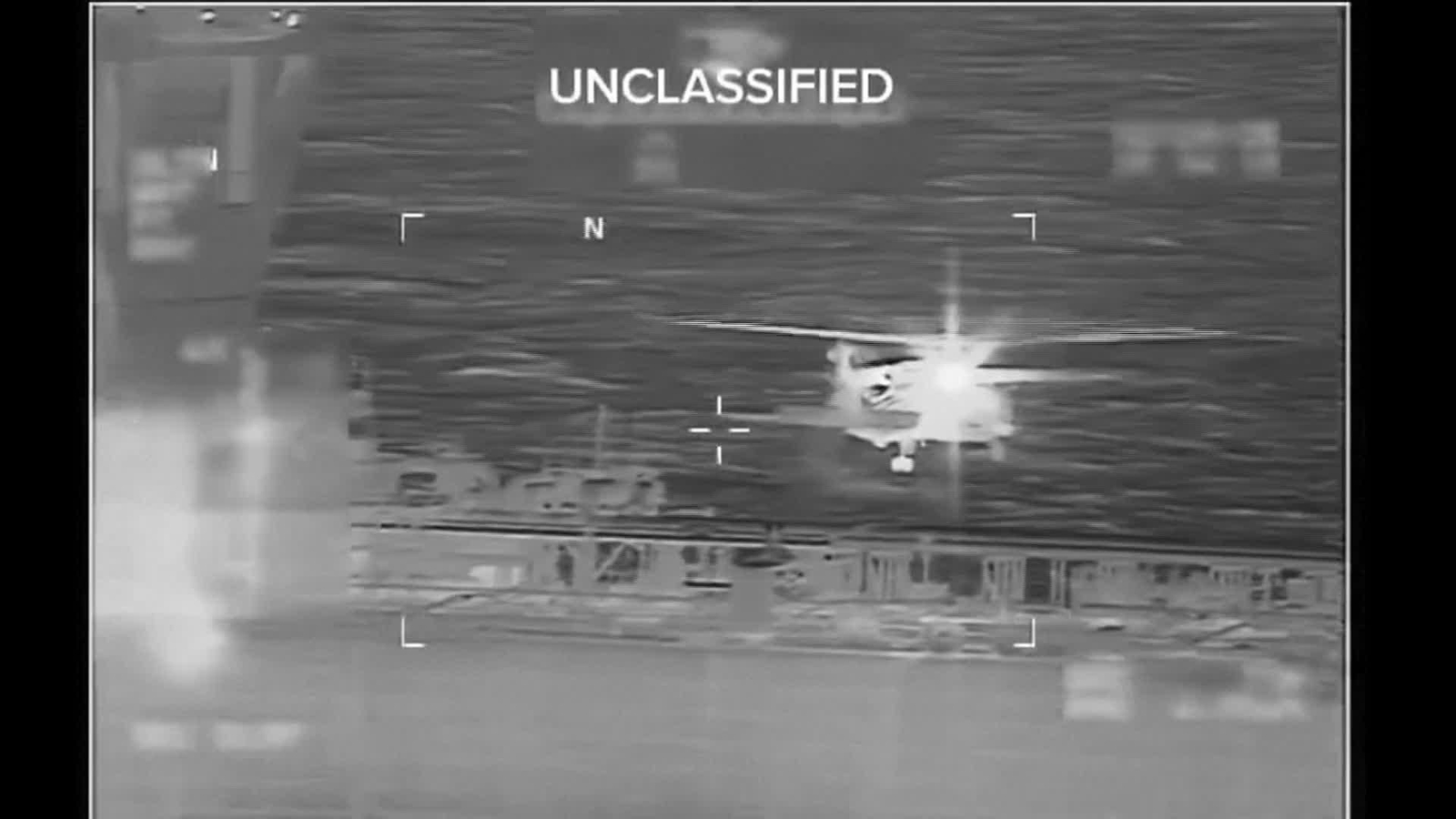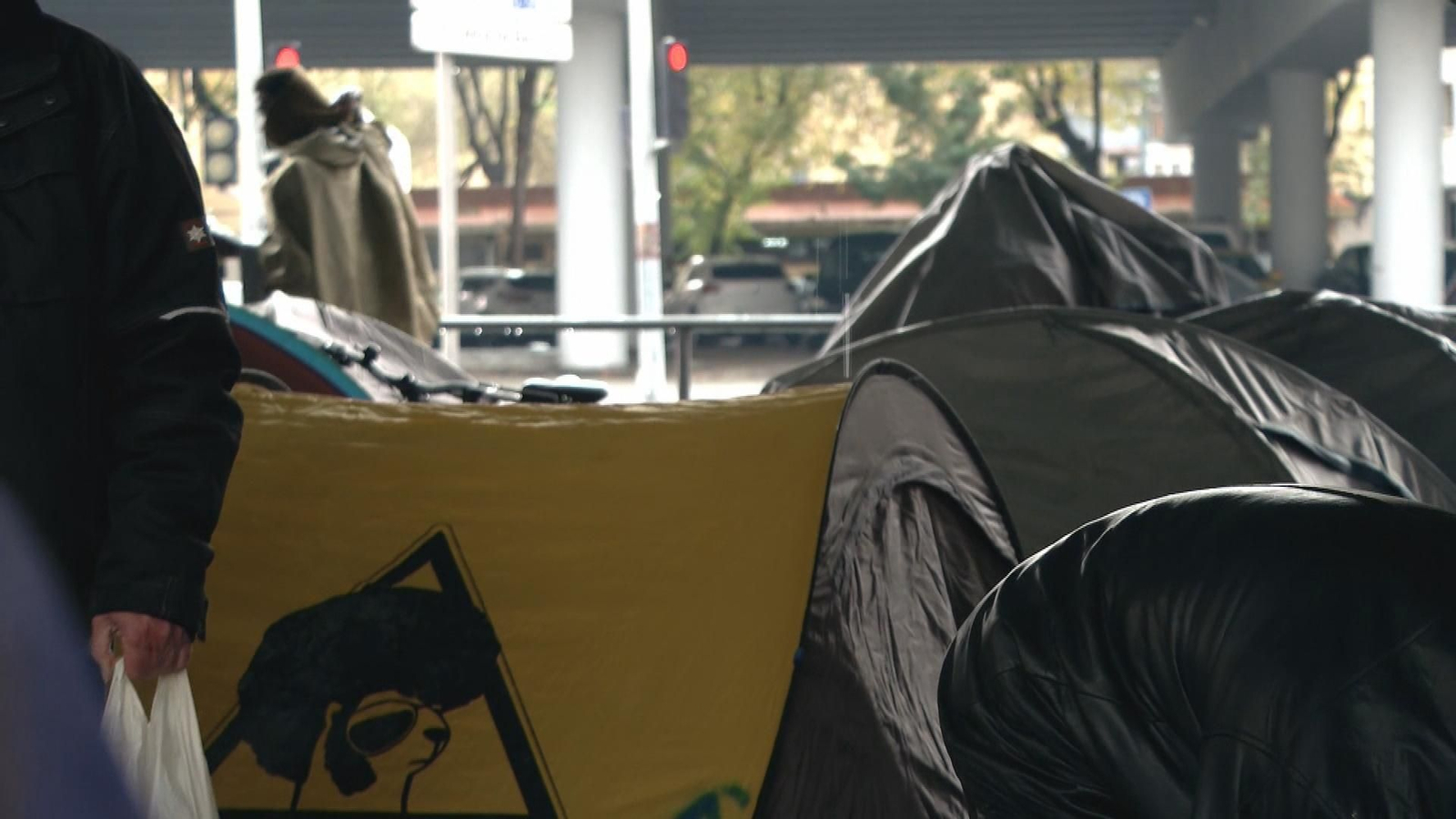X076-ISRAEL NEARDENTALES
A fossilized skeleton of a five-year-old child discovered in a prehistoric cave about 90 years ago in the then British-ruled Palestine, has pushed back the timeline for human-Neanderthal interbreeding by over 100,000 years, researchers in Israel and France said on Wednesday (August 20).
The partial skeleton was studied and analysed by an international team led by researchers from Tel Aviv University and the French National Centre for Scientific Research. The findings were published in the journal l’Anthropologie.
The fossil was originally excavated in the 1930s from Skhul Cave on Mount Carmel, in what is today northern Israel.
The Israeli team, led by Professor Israel Hershkovitz, said the child skeleton exhibited a unique blend of Neanderthal and Homo sapiens traits.
It said its skull showed a cranial curvature typical of Homo sapiens, while the jawbone and vascular patterns revealed Neanderthal characteristics.
Advanced imaging techniques revealed that the child lived around 140,000 years ago, making it the oldest known hybrid between the two human species, which were considered two different species until recently.
"What we managed to show is that actually Neanderthals and Homo sapiens start interbreeding, not around 60,000 to 40,000 years ago, but around 140,000 years ago - 100,000 years earlier than most people think," said Hershkovitz.
The Tel Aviv team also presented an AI-generated image depicting a hypothetical family with a Neanderthal father, a Homo sapiens mother, and a hybrid child.
Neanderthals, formally called Homo neanderthalensis, were more robustly built than Homo sapiens and had larger brows.
They lived from around 430,000 years ago until their disappearance relatively soon after Homo sapiens - a species that arose roughly 300,000 years ago in Africa - trekked into areas Neanderthals inhabited in the Middle East, Europe and Asia.
Most people today have genes inherited from Neanderthals, roughly 1-2% of their DNA.
When asked about the impact the study might have on understanding human behaviour, Hershkovitz said that humans may not be inherently aggressive, citing evidence suggesting a long history of coexistence with another species.
DESCRIPCIÓN DE IMÁGENES
Human-Neanderthal interbreeding began 100,000 years earlier, Israeli–French team finds
VIDEO SHOWS: VIDEO FOOTAGE AND STILL PHOTOS OF REMAINS OF PREHISTORIC FIVE-YEAR-OLD CHILD, SAID TO BE THE WORLD'S EARLIEST KNOWN HUMAN FOSSIL SHOWING MORPHOLOGICAL TRAITS OF BOTH NEANDERTHALS AND HOMO SAPIENS/ FOSSILS AT LAB/ LAB WORK/ SOUNDBITES FROM RESEARCHERS/ FILE FOOTAGE OF EXCAVATIONS SITE IN BRITISH MANDATORY PALESTINE/ AI-GENERATED IMAGE OF A MIXED NEANDERTHAL-HOMO SAPIENS FAMILY
EDITORS PLEASE NOTE: THIS EDIT CONTAINS VIDEO WHICH WAS ORIGINALLY 4:3
RESENDING WITH COMPLETE SCRIPT
SHOWS: TEL AVIV, ISRAEL (AUGUST 19, 2025) (REUTERS - Access all)
1. VARIOUS OF LAB TECHNICIAN AT TEL AVIV UNIVERSITY USING TOOL TO REMOVE SEDIMENT FROM A FOSSIL EMBEDDED IN STONE
2. PROFESSOR ISRAEL HERSHKOVITZ OF THE GRAY FACULTY OF MEDICAL AND HEALTH SCIENCES AT TEL AVIV UNIVERSITY OBSERVING WORK, TALKING WITH TECHNICIAN
3. HERSHKOVITZ OPENING DRAWER AT STORAGE, TAKING OUT REMAINS OF SKELETON OF A FIVE-YEAR-OLD CHILD WHO LIVED 140,000 YEARS AGO, WHO ACCORDING TO THE RESEARCH IS THE WORLD'S EARLIEST KNOWN HUMAN FOSSIL SHOWING MORPHOLOGICAL TRAITS OF BOTH NEANDERTHALS AND HOMO SAPIENS
4. HERSHKOVITZ HOLDING FOSSIL
5. HERSHKOVITZ LOOKING AT FOSSIL
6. VARIOUS OF HERSHKOVITZ HOLDING FOSSIL DURING PRESENTATION TO HIS TEAM
UNKNOWN LOCATION (FILE) (TEL AVIV UNIVERSITY HANDOUT - No archive/ No resale) (MUTE)
7. STILL PHOTO OF THE SKULL OF PREHISTORIC CHILD SHOWING FEATURES TYPICAL OF HOMO SAPIENS
8. STILL PHOTO OF THE LOWER JAW OF THE PREHISTORIC CHILD SHOWING FEATURES TYPICAL OF NEANDERTHALS
TEL AVIV, ISRAEL (AUGUST 19, 2025) (REUTERS - Access all)
8. HERSHKOVITZ BEING INTERVIEWED
9. FOSSIL ON TABLE
10. HERSHKOVITZ'S EYES
11. (SOUNDBITE) (English) PROFESSOR ISRAEL HERSHKOVITZ OF THE GRAY FACULTY OF MEDICAL AND HEALTH SCIENCES AT TEL AVIV UNIVERSITY, SAYING:
"The Skhul Cave is one of the earliest prehistoric caves ever excavated. It was found in the early 30th of the previous century and was excavated for for three years from 1930 to 1933 by a joint British and American expeditions headed by Dorothy Garrod. During the excavation, they found the remains of more than 10 individuals buried in the cave, and they consider it to be actually the first cemetery in the world."
MOUNT CARMEL, THEN BRITISH MANDATORY PALESTINE (FILE - 1932) (ORIGINALLY 4:3) (MONOCHROME) (TEL UNIVERSITY HANDOUT - No archive/ No resale) (MUTE)
12. EXPEDITION CAMP AT THE FOOT OF MOUNT CARMEL WHERE THE FOSSIL WAS FOUND
13. WORKERS EXCAVATING AT THE PREHISTORIC CAVE
14. REMAINS OF ANCIENT SKELETON
15. SKELETON ON SITE BEING CLEANED
TEL AVIV, ISRAEL (AUGUST 19, 2025) (REUTERS - Access all)
16. (SOUNDBITE) (English) PROFESSOR ISRAEL HERSHKOVITZ OF THE GRAY FACULTY OF MEDICAL AND HEALTH SCIENCES AT TEL AVIV UNIVERSITY, SAYING:
"When the anthropologists who excavated at the site studied the fossil, they noticed that there is something very bizarre in the general morphology, in the sense that they in general look like Homo sapiens but on top of it they carry some Neanderthal features and this is why they actually placed it between Neanderthals, that at that time considered to be the ancestors of the Homo sapiens and the Homo sapiens."
17. RESEARCHER MICHAEL LEVITZKY, A MASTER STUDENT AT PROF HERSHKOVITZ'S LAB, POINTING AT 3D RECONSTRUCTION OF THE FOSSIL'S SKULL, CREATED BY MICRO-CT SCANNER, BEING SHOWN ON SCREEN, SAYING (Hebrew) "We can see here the blood vessels imprinted on the skull and here we mark them all and you can see the interior division, which is this one and the posterior division, which is this one."
18. (SOUNDBITE) (English) RESEARCHER MICHAEL LEVITZKY, A MASTER STUDENT AT PROF HERSHKOVITZ'S LAB, SAYING:
"Here, although we know there is a lot of traits of Homo sapiens in this skull, we can see from the blood vessels that it's a bit of a mosaic, it's called, it's a mixture of traits. We have here the occipital, the posterior division, which is more developed, more pronounced, and showed more Neanderthal traits. After all.. after this, we did a picture (of a mixed family from that period of time)."
GRAPHICS (FILE) (TEL AVIV UNIVERSITY HANDOUT - Access all/ No archive/ No resale) (MUTE)
19. AI-GENERATED IMAGE OF A MIXED NEANDERTHAL-HOMO SAPIEN FAMILY WITH A NEANDERTHAL FATHER, AND A HOMO-SAPIEN MOTHER AND A CHILD WITH MIXED NEANDERTHAL-HOMO SAPIENS FEATURES
TEL AVIV, ISRAEL (AUGUST 19, 2025) (REUTERS - Access all)
20. VARIOUS OF FOSSILS ON TABLE
21. (SOUNDBITE) (English) PROFESSOR ISRAEL HERSHKOVITZ OF THE GRAY FACULTY OF MEDICAL AND HEALTH SCIENCES AT TEL AVIV UNIVERSITY, SAYING:
"What we managed to show is that actually Neanderthals and Homo sapiens start interbreeding, not around 60,000 to 40,000 years ago, but around 140,000 years ago - 100,000 years earlier than most people think, which is a kind of surprise. It means that actually there was a long overlap of coexistence of two populations, the Homo sapiens population and Neanderthal population coexisted one next to the other for a very long period of time."
22. PROFESSOR HERSHKOVITZ BEING INTERVIEWED BEHIND DISPLAY OF FOSSILS
23. (SOUNDBITE) (English) PROFESSOR ISRAEL HERSHKOVITZ OF THE GRAY FACULTY OF MEDICAL AND HEALTH SCIENCES AT TEL AVIV UNIVERSITY, SAYING:
"Present people have the tendency to blame our ancestors for our violent behaviour and now what we bring to the discussion is a totally different story. What we are actually showing is that actually Homo sapiens was not a violent species at all because he managed to live side by side with Neanderthals for a very long period of time, and he's not responsible for the elimination of the Neanderthals and other homo groups from the globe."
24. VARIOUS OF LAB TECHNICIAN USING TOOL TO REMOVE SEDIMENT FROM A FOSSIL EMBEDDED IN STONE
25. (SOUNDBITE) (English) PROFESSOR ISRAEL HERSHKOVITZ OF THE GRAY FACULTY OF MEDICAL AND HEALTH SCIENCES AT TEL AVIV UNIVERSITY, SAYING:
"What he tells us about about us, about our current behaviour, about current human behaviour, is that violence is a modern phenomenon, it's not an ancient phenomenon, it doesn't start with our ancestors, it's not within our blood at all. It's something which is mostly cultural, not in our blood, and developed very recently. And we have to be aware of it because our species in general is a peaceful species and not an operative species and not a violent species."
26. FOSSILS ON DISPLAY









